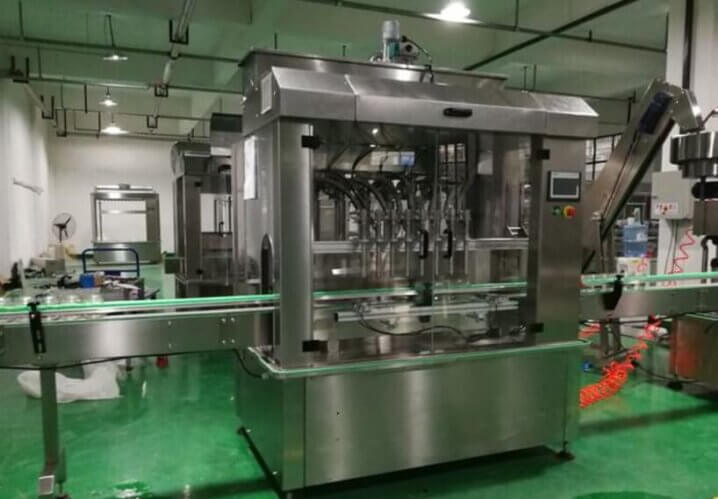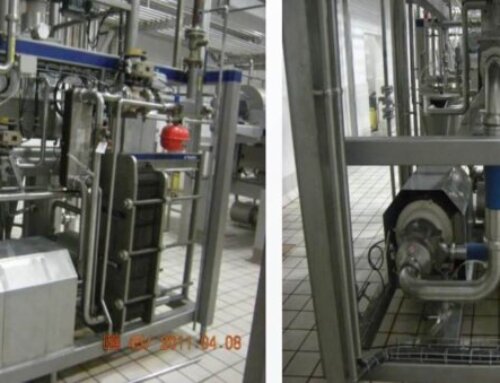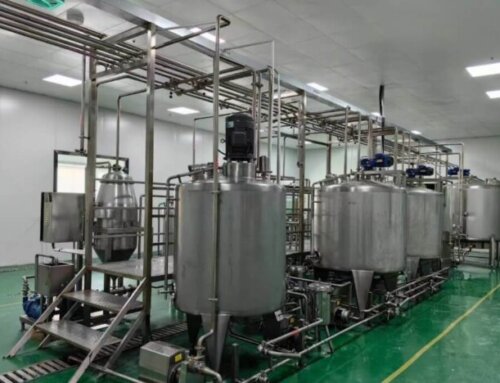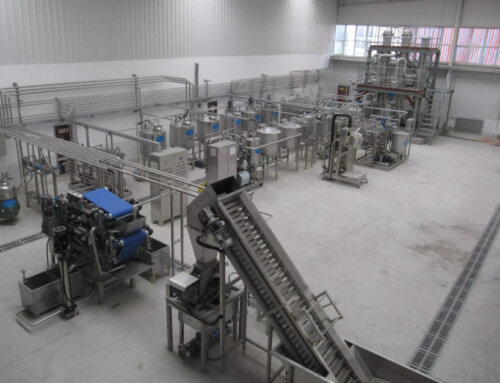Fruit Pulp Processing Line Description
Fruit pulp/puree are the edible parts of fresh fruits and vegetables that are beaten/pulped into juice-containing slurry products, which are rich in pulp and fruit fiber, retaining the nutrient content and fruit fiber to the greatest extent. The raw fruit puree retains the sugar, amino acids, vitamins and minerals contained in the fresh raw materials. The flavor and nutrition are very close to fresh fruits, which can quickly replenish human nutrition and energy. Common fruit pulp products include mango puree, berry puree, peach puree, kiwi puree, guava puree, banana puree, carrot/tomato pulp etc.
Purées as a product group differ significantly from juices because all the processing steps involve pulp that is highly viscous. This represents an end-to-end challenge for the equipment used. We can provide you with the full range of equipment and process modules you need for processing purée effectively and reliably. This gives you a versatile set-up designed for maximum up-time, along with the ability to achieve prime-quality purées with low operating costs.
Purée is normally produced as either single-strength or concentrated. There is particular demand for concentrated purée because it reduces both shipping and storage costs, as well as ensures more stable products in aseptic bags.
Depending on specific purée requirements, the mash can either be extracted using hot break or cold break methods, depending on whether viscosity or color/taste are prime considerations. To ensure maximum yield, the actual extraction takes place in a double-stage pulping machine.
A special decanter centrifuge that ensures exceptional levels of hygiene is used to reduce the pulp to the desired specifications. When processing purée made from tropical fruits like mango and banana, this is also the most efficient way to remove any black specks that may be present.
Most of the fruits and vegetables like apples, bananas, tomatoes, carrots, mango, guava, passion fruit, papaya, kiwifruit, etc. can proceed into the fruit puree.
The capacity for the fruit pulp processing plant is from 1 ton per hour to 50 tons per hour. The fruit puree can be filled into aseptic bags in drums, bag in boxes, bottles, cans or pouches.
Fruit purees are mainly used for producing smoothies, desserts and fruit desserts. It is often worth concentrating a fresh puree from its original exact content to around 30 Brix. Some kinds of enzymes can be dosed into the fruit mashes to increase the homogeneity of the fruit purees.
Fruit puree processing plants include fresh fruit and vegetable washing and sorting machines, peeling(pitting) and crushing machines, fruit pulping and refining machines, fruit puree separating and filtering machines, fruit puree standardization machines, and fruit puree homogenizing, sterilizing and filling machines.
We offer a turnkey project fruit puree processing lines, fruit juice processing line and machine!

The Difference Of Fruit Puree And Fruit Juice
Fruit purée: it is the unfermented but fermentable product obtained by suitable processes e.g. by sieving, grinding, milling or pulping the edible part of the whole or peeled fruit without removing the juice. It is made by blending or mashing the whole fruit (minus the seeds and skin), resulting in a thicker, smoother, and more viscous texture. It retains more of the fruit’s fiber and can have a more concentrated flavor and consistency.
Fruit Juice: Fresh fruits are processed into unfermented juice through physical or chemical methods (fruit pressing, juice extraction), with the color, flavor and soluble solid content of the original fruit pulp. The juice content is 100%. The fruit juice does not contain the fruit fiber and pulp, and lower viscosity than fruit puree.
Fruit juice drink: It refers to a clear juice prepared by adding water, sugar liquid, sour agent, etc. to fruit juice (or concentrated fruit juice). The juice content in the finished product is not less than 10 (m/V), such as orange juice drinks, pineapple juice drinks, and apple juice drinks.
Classification Of Fruit Puree
There are two types of fruit puree in fruit and vegetable processing:
Single-strength fruit puree: Usually 8-15 Brix based on different fruit varieties, they can be used for baby food, like banana, apple and carrot puree.
Concentrated fruit puree: 30-32 Brix concentrated by the evaporator, which is high-viscosity, can be used for making small packages of fruit juice by adding water, sugar and other ingredients or can be food ingredients.
Fruit Pulp Processing Line Technological Flowchart
Fresh fruits and vegetables through washing, sorting, crushing (some fruits need to peeling, depitting, deseeding at the same time), then the crushed fruits can go direct for pulping or go for preheating before pulping. After pulping, we obtained the fruit pulp. Then the decanter or centrifuge separator is applied to the puree to remove the coarse fruit pulp and suspensions, until this process, we get the fine fruit puree. But in order to get high-quality fruit puree and extend the shelf life, the fine fruit puree need to sterilize and filling into aseptic containers.

Key Machine Of Fruit Pulp Processing Line
Fruit pretreatment system
The fruit pretreatment system mainly includes fruit washing, fruit sorting, fruit peeling, fruit grading, fruit blanching, fruit deseeding and fruit crushing process according to different fruits features. In all, the fruit treatment system is transferring the fresh fruits and vegetables into material that can be pulping.
Fruit pulping machine
The fruit pulping and refining machine is the core process for fruit pulp processing. There are two fruit pulping technology: One is hot pulping, between fruit crushing and pulping process, one tubular preheater or tube-in-tube preheater will be applied to fruit puree to inactivate the enzyme, which can enhance yield rate; The other type is cold pulping, After the fruits and vegetables are crushed at room temperature, they are directly beaten and sieved to obtain fruit pulp without preheating. The pulp obtained in this way can retain more nutrients and color, while not destroying the activity of the pectin-decomposing enzyme in the pulp, which facilitates the decomposition of pectin in the juice, and improves the color value and stability of the product.
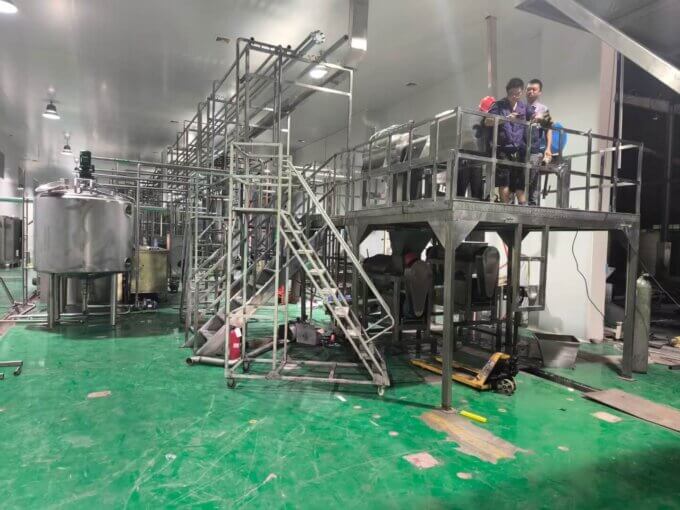
Fruit puree concentrating machine
Many kinds of fruit puree can be made into concentrated such as banana, mango, guava, tomato, etc. For most cases, the forced circulation evaporator can be used for concentrating the single-strength puree into concentrate, after concentration, the puree is easy to transport and store. The puree evaporator capacity is from 500L to 100,000L per hour according to the different requirements.

Fruit puree homogenizer
The fruit puree homogenizer is used for making the fruit puree smoother and have a great taste and make the fruit puree fiber and tissue smaller. The homogenizer pressure is 20-30Mpa at 50-60℃. The homogenizer is made of SUS 304 material and the capacity is from 500LPH-20000LPH.
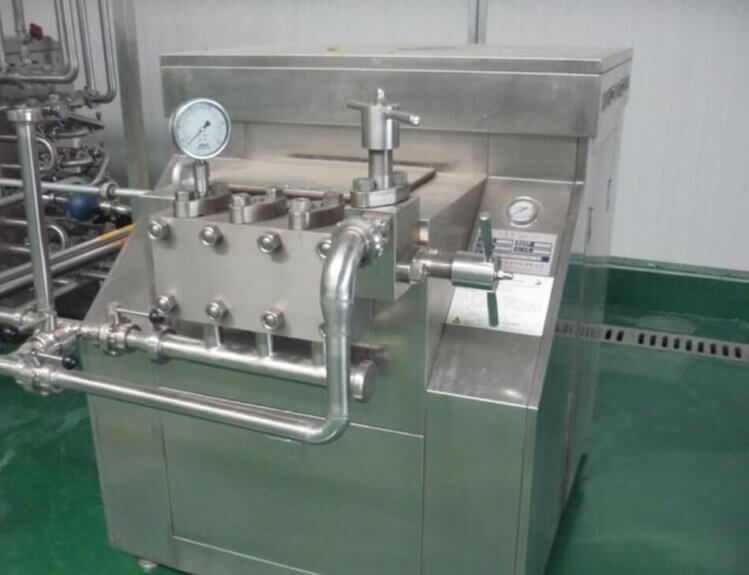
Fruit puree sterilizer
The filtered fine fruit puree is fed into the tubular or tube-in-tube sterilizer through the fruit pulp pump, tomato, carrot, mango and banana puree use tube-in-tube sterilizer, and apple, berry and kiwi puree can use the tubular sterilizer to treat.
The sterilizer typically consists of a stainless steel heat exchanger that is equipped with heating elements and a temperature control system. The fruit puree is pumped into the heat exchanger and heated to the desired temperature, which is usually between 85°C and 125°C. The puree is then held at this temperature for a specified period of time, typically between 15 and 60 seconds, before being cooled rapidly to stop the sterilization process.
During the sterilization process, the fruit puree is typically circulated continuously to ensure that it is evenly heated and sterilized. The equipment may also include sensors or alarms to monitor the temperature and pressure inside the heat exchanger to ensure that the sterilization process is effective and safe.

Fruit puree filling machine
Single strength puree will be filled into 220L aseptic bags for retailing or small bottles or pouches for direct consumption. Concentrated fruit puree can be filled into aseptic bags in drums for further processing into small package juice.
There are main three filling technologies for the fruit puree:
—Aseptic filling: the filling temperature is room temperature with 30℃, the classical packages are 5-220L aseptic composite bags and aseptic composite cartons. This filling needs to match with UHT sterilizing technology to make sure the fruit puree is aseptic. This type of product is very convenient and can be stored anywhere with a shelf life reach 12 months.
—Hot filling: The hot filling temperature is 85℃, the most common package is small pouches and bottles, the fruit puree will be pasteurized at 95℃ then cooled to 85℃ filling into containers. After filling, the puree in containers will go secondary pasteurizing. With this process, the shelf life can also reach 12 months.
—Cold filling: Filling temperature is 4-6℃, usually the puree will be pasteurized and filled into aseptic bags, pouches or plastic boxes. After filling, the fruit puree can be stored in a refrigerated environment(4-6℃) or frozen environment(-18℃). If in a refrigerated environment, the product shelf life is about one week to one months, and if in the frozen environment, the puree can reach 24 months.
